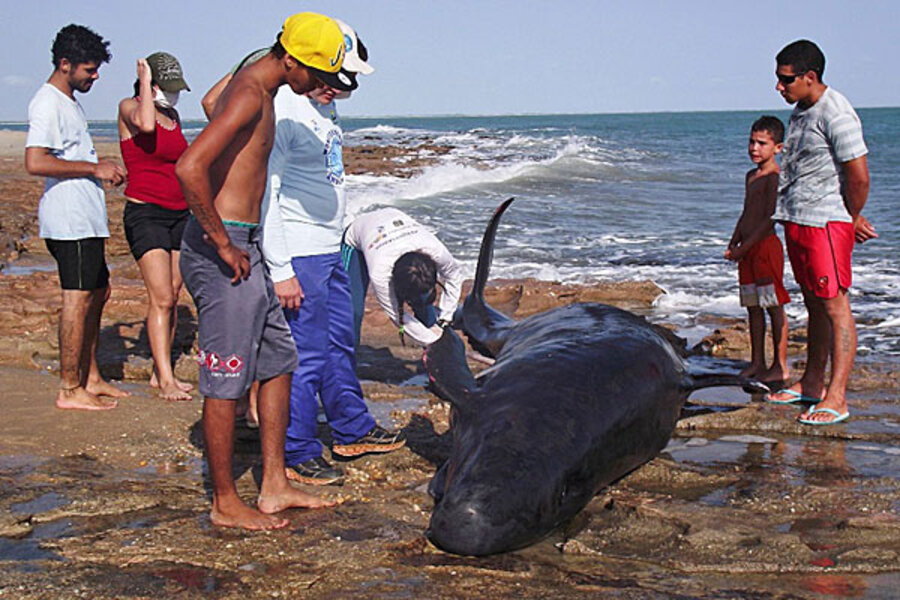In Brazil, massive pod of dolphins beached
Loading...
| Rio de Janeiro
Around 30 large dolphins beached themselves in northeastern Brazil over the weekend, and news reports said Monday that at least seven of them had died.
The dolphins, known as false killer whales, ran aground early Sunday on the shallow sands of Upanema beach in Areia Branca, roughly halfway between the cities of Fortaleza and Natal.
Images distributed by the environmental police of Rio Grande do Norte state show beachgoers and passers-by attempting to aid the animals, which lay stranded in inches- (centimeters-) deep water. Most of the animals were still, occasionally twitching their tails, as beachgoers swabbed them with wet T-shirts.
O Globo newspaper reported Monday that at least seven on the animals died, six of them on the Upanema beach. O Globo said one animal died following an apparent shark attack after it was returned to the ocean. The report stressed that the dolphin was likely attacked in very deep waters and that area beachgoers needn't worry about shark attacks.
The paper said it was not immediately known why the animals beached themselves, but biologists were examining whether the pod leader might have been ill. Another hypothesis is that the dolphins were pursuing a school of fish and were trapped on Upanema's high sand banks.
O Globo said it was among the largest collective beachings in Brazil in recent decades. In 1991, around 19 whales beached themselves on the sands of the nearby town of Sao Miguel do Gostoso, the report said.
These false killer whales (Pseudorca crassidens) have a small conical head without a beak. Their dorsal fin is tall and their flippers (pectoral fins) have a distinctive hump or bulge in the middle of the front edge.
Last year, more than 177 short-beaked common dolphins were stranded on Cape Cod, and 124 died. Scientists didn't have a clear answer for the string of beachings, including a group of 11 in February.
Workers at the IFAW (International Fund for Animal Welfare), which has led the rescue efforts, tag and take blood samples of the stranded animals, necropsies have been done on dead dolphins and a Congressional briefing was held early this month in the push for answers. But researchers can offer only theories about things such as changes in weather, water temperature or behavior of the dolphins' prey. Geography may also play a role, if the dolphins are getting lost along the Cape Cod's jagged inner coastline.
According to a study published last month, dolphins have the longest memories of any animal besides humans.
Last month, researchers at Scotland's University of St Andrews also found that wild dolphins call back to a recorded copy of their own signature whistle, in effect answering to their name. That finding suggested that dolphins have developed a sophisticated means of communication with each other that is similar to human language, in that meaning is attached to sounds.
Copyright 2013 The Associated Press. All rights reserved. This material may not be published, broadcast, rewritten or redistributed.







